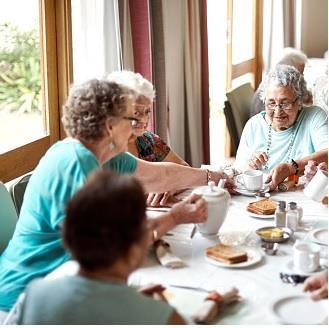Real estate investors acquired more than €1 bn of German care home assets during 2017, according to a new analysis by CBRE. This is the third best investment performance for the segment since records began and more than 33% higher than the long-term average since 2005.

Driven by single-asset and smaller portfolio deals, the relative share of the care home real estate asset class in the overall German commercial real estate transaction volume stood at 1.8% in 2017.
Despite the strong demand for care homes, the segment's 2017 market share was far lower than the 5.6% recorded in 2016, which CBRE described as a 'extremely dynamic' 12-month period.
'As we predicted half way through the last year, investment momentum returned to more normal levels over the course of 2017 compared with 2016 when a record result totalling €3 bn was set through some very large-scale portfolio acquisitions,' said Jan Linsin, head of research at CBRE Germany.
Linsin continued: 'But even without large property transactions, the care home market remains a growth market. The transaction volume has increased every year by an average 20% since 2008. A number of partly very small unit individual transactions in particular kept investment momentum high and above average.'
Where is the capital coming from?
The bulk of investment came from outside of Germany. CBRE's analysis reveals international investors accounted for 64% of the German care home property investment volume in 2017, up from 61% in 2016. The main buyers were from Belgium (31.5% of the overall volume); Luxembourg (12%) and Sweden (11%).
In terms of the types of buyers, listed property companies specialising in healthcare and social welfare properties accounted for a 51% of the volume; followed by special funds on 17% and closed-end fund vehicles on 15%.
Just under 70% of the €1-plus bn capital was deployed to acquire existing assets, CBRE said. Some €318 mln, or 31%, was invested in property development. However, this figure includes the takeover of a portfolio via a forward-purchase transaction. Investment in the development was hindered by the low level of new construction activity, the CBRE report found.
Operators
Aside from bricks-and-mortar assets, investors are also seeking to acquiring care home operating companies. Such deals include Swedish private equity investor Nordic Capital acquired retirement home operator Alloheim von Carlyle, while US investor Oaktree purchased operator Vitanas Holding and executed the partial takeover of operator Pflegen & Wohnen.
'Even if we do not expressly count these transactions as conventional real estate investment deals, they are an indication that the market is developing dynamically and that consolidation in the care home market is in full swing,' Linsin added.
Deal size
CBRE registered just under 80 real estate transactions, a good two thirds of which were sold as single deals. Of this figure, 42% was attributable to the purchase price category of below €10 mln, with another 43% in the €10-20 mln range.
'Supply recently consisted of very small units – larger portfolios were more of an exception in 2017. Nevertheless, the demand of institutional investors for well positioned care home portfolios continues to run high and is meanwhile accompanied by a lack of adequate supply, similar to the other asset classes of the commercial real estate sector,' commented Dirk Richolt, head of real estate finance at CBRE Germany.
'On the one hand, there is no great pressure on care home portfolio holders to sell – some operators are even endeavouring to buy back properties instead of entering into sale-and-lease-back transactions – while, on the other, the low level of new construction makes for a limited product supply. Consequently, the pressure on yields, particularly in the case of first rate core products, remains high, and net initial yields will continue to be pushed lower.'
At the end of 2017, the net initial yield for premium care homes came in at 5.0% compared with 5.5% the year before. By contrast, the average yield stood at 6.25% at the end of 2015. 'Even if care home properties are still considered a niche product, the yield compression over the past 24 months is impressive proof that alternative asset classes are also highly sought after by institutional investors,' Linsin noted.










